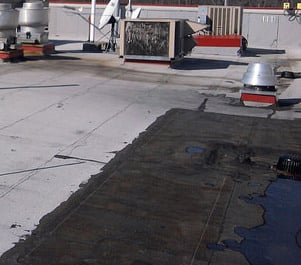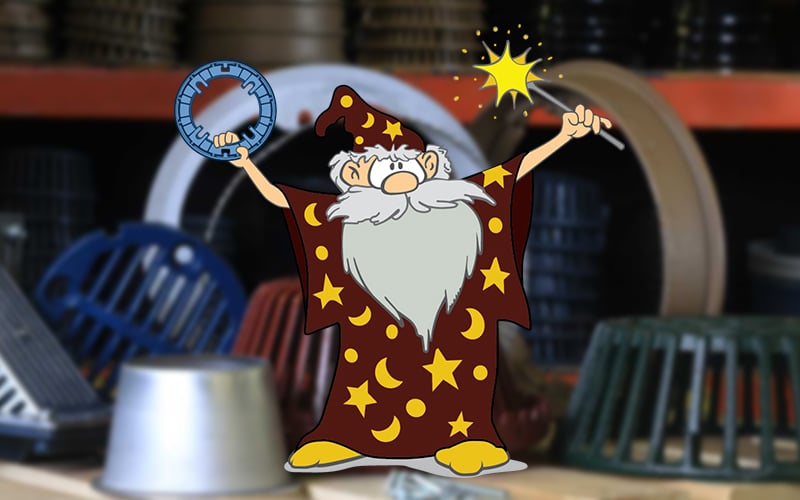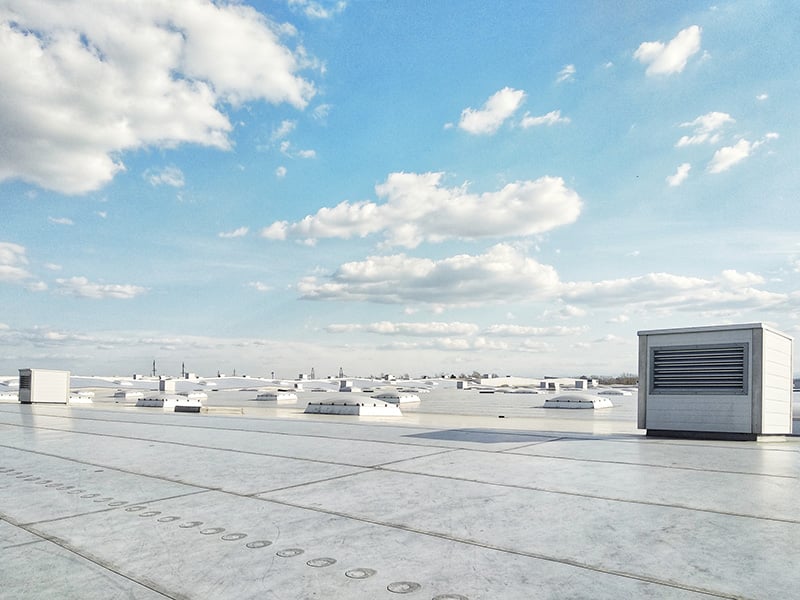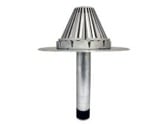Large commercial and residential flat roofs, especially those with parapet walls, are catchalls for any and all sort of debris, including leaves, twigs, plastic bags, etc.
 These roofs typically have inner roof drainage systems, which include roof drains strategically placed throughout the roof deck to quickly drain away water. Well, as the water flows towards these drains, so goes all the debris.
These roofs typically have inner roof drainage systems, which include roof drains strategically placed throughout the roof deck to quickly drain away water. Well, as the water flows towards these drains, so goes all the debris.
Drains and debris don’t mix. A drain’s dome lets water flow through while catching debris, which would otherwise clog the plumbing. Unfortunately, this debris builds up around the drain dome, slowing or eventually stopping the water.
What Can Happen If a Drain Clogs?
If water can’t drain away quick enough, you’ll be stuck with a series of pools around your roof. Pooling water can:
- Deteriorate caulking, tar and roofing cement.
- Seep into spots where HVAC units, skylights, vents, chimney’s and other features connect to the roof.
- Weaken roofing material seams as water gets into gaps, and expands and contracts with the changing temperature.
- Strain the roof’s structural supports with the additional water weight.
- Freeze and create safety hazards in the last place you want safety hazards.
- Lead to unwanted plants, moss and slime growing on the roof deck or around drains.
- Create the world’s largest mosquito factory.
So, how do you avoid flat roof drain clogs?
How to Avoid Clogged Flat Roof Drains
1. Regularly Clean the Drains
The most obvious recommendation is to regularly inspect and clean your roof drains. At minimum, you should do this once a month.
Brush or pull away debris built up around the roof drain dome (or cover) and in the drain bowl. If you notice build up in the outlet or connected pipe, get a plumber to snake it out. Avoid using drain cleaner which can eat into the pipes, leading to larger and more expensive problems.
2. Keep the Roof Deck Clean
Regularly clean away any debris that may be on the roof deck itself. This is especially important to do after storms, windy days and in the fall if the roof is near any trees.
3. Buy the Right Roof Drain Dome
Drain dome slots come in different thicknesses based on the manufacturer, drain type and size. With larger drain domes, more debris can flow in, but they typically connect to wider piping, so this won’t lead to any significant clogs.
Talk to your roof drain sales rep about the roof size, average rainfall and exposure to debris to help find the right sized drain for your roof.
If you need replacement flat roof drains or parts, or simply want to speak to a drain expert, Hy-Tech Roof Drains is your source for competitively priced products, fast shipping, and immediate, knowledgeable support.





